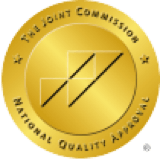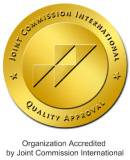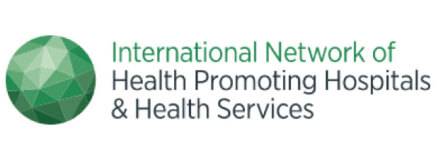Diagnosis of colorectal cancer and gastric cancer relies on colonoscopy and gastroscopy. Learn about the procedure, types, costs, and risks of colonoscopy to help with early prevention and detection of cancer, thereby improving the chances of successful treatment.
Colonoscopy: Preventing Colorectal Cancer
Colorectal cancer primarily develops from intestinal polyps. While polyps are initially benign, with sufficient genetic mutations accumulated over approximately 7 to 10 years, some may progress into malignant tumors. This process typically occurs without any symptoms, making early detection and removal of polyps through screening the most effective way to prevent the formation of colorectal cancer.
Reasons to Undergo a Colonoscopy
Colonoscopy is currently the most effective method for diagnosing colorectal cancer, polyps, and other colorectal conditions. Doctors typically recommend the procedure for the following individuals:
- Those experiencing chronic diarrhea, constipation, blood in stool, or black stools
- Individuals with a positive fecal occult blood test
- People with a family history of colorectal cancer or nearing the recommended screening age (generally 50 or older)
- High-risk individuals requiring follow-up for colorectal polyps or chronic intestinal inflammation
- Screening for early colorectal cancer and reducing the risk of colorectal cancer mortality
Through colonoscopy, doctors can directly examine the mucosal condition of the entire colon and the terminal ileum, enabling timely detection and removal of polyps, which significantly lowers the incidence of colorectal cancer
Principle of Colonoscopy
Colonoscopy (or colonoscopic examination) involves using a thin, flexible endoscope equipped with a high-definition camera at its tip. Inserted through the anus, the endoscope is slowly advanced along the colon to examine the rectum, sigmoid colon, descending colon, transverse colon, ascending colon, and cecum, and can even reach the terminal ileum (the end of the small intestine). This endoscope features bending and steering capabilities, transmitting real-time images to a high-resolution screen, allowing doctors to closely observe subtle changes in the intestinal wall.
Colonoscopy Types Comparison Table
| Examination Types | Coverage Range | Features | Advantages | Disadvantages |
| Sigmoidoscopy | Rectum and Sigmoid Colon | Partial colonic examination, no need for full bowel cleaning, relatively quick completion | Fast (10-20 minutes) No sedation required |
Limited field of view (ignores upper colon issues); upper polyps require subsequent colonoscopy |
| Colonoscopy | Rectum to the entire colon | Full bowel coverage, polyp removal possible, high precision | Polyps can be detected and removed High accuracy |
Capsule endoscopySmall or large intestineSwallowing capsule imaging, non-invasive and painlessPainless, non-invasive; suitable for small bowel examination; patient comfortPolyps cannot be removed; limited image quality; requires subsequent colonoscopy confirmation |
Colonoscopy Procedure + Preparation
Colonoscopy Procedure
Colonoscopy (also known as lower gastrointestinal endoscopy) is a medical procedure that uses an endoscope to examine the intestines. During the procedure, the doctor inserts a flexible tube approximately 1.3 cm in diameter, equipped with a camera at its tip, through the patient’s anus to inspect the lower gastrointestinal tract—including the anus, cecum, colon, and rectum—for tumors, polyps, inflammation, or bleeding.
If necessary, the doctor may collect tissue samples for laboratory testing or perform therapeutic interventions such as stopping bleeding or removing polyps during the examination. Since most patients receive mild sedation, the entire procedure typically takes about 30 minutes.
Colonoscopy Preparation
Before undergoing a colonoscopy, patients must follow their doctor’s instructions and begin a low-residue diet two to three days in advance. On the day before the examination, bowel-cleansing medication is required to thoroughly clear stool and debris from the intestines, ensuring that the doctor can clearly examine every part of the colon through the endoscope.
Post-Colonoscopy Care Guidelines and Precautions
Proper care after a colonoscopy is essential for recovery:
- Recovery from anesthesia: If sedation or general anesthesia was used, you may feel dizzy, drowsy, or slow to react after the procedure. Rest in the recovery room until most of the effects wear off.
- Avoid driving and risky activities: Do not drive, operate machinery, sign important legal documents, or make major decisions on the same day. It is recommended to have a family member or friend accompany you home.
- Abdominal discomfort: Air introduced during the procedure may cause bloating, frequent passing of gas, or mild abdominal pain. This is normal and usually resolves within a few hours. Walking helps release the gas.
- Diet: Once the anesthesia has fully worn off and nausea is absent, start with small amounts of water. If no discomfort occurs, gradually resume a normal diet. Initially, avoid spicy, greasy, and high-fiber foods; choose light, easily digestible meals.
- Monitoring stool: If polyps were removed, small traces of blood in the stool may appear, which is normal. However, if you notice large amounts of fresh blood, black tarry stools, persistent severe abdominal pain, fever, dizziness, or palpitations, contact your doctor or go to the emergency department immediately, as these may indicate bleeding or perforation.
- After biopsy or polyp removal: Your doctor will provide specific dietary and activity instructions. Follow them strictly. Typically, strenuous exercise and heavy lifting should be avoided for several days.
Potential Risks and Complications of Colonoscopy
Although colonoscopy is generally safe, there are a few potential risks, with complications being very rare:
- Bowel perforation: The most serious but extremely rare complication, in which the endoscope accidentally punctures the intestinal wall. If this occurs, emergency surgery is usually required. Risk factors include advanced age, severe intestinal inflammation, diverticulosis, or a history of abdominal surgery.
- Bleeding: Mild bleeding may occur at the site of polyp removal or biopsy, and it usually stops on its own. More severe bleeding may require a blood transfusion or another endoscopic procedure to control it.
- Anesthesia-related risks: Sedation or general anesthesia may cause allergic reactions, respiratory depression, or abnormal heart rhythms. However, an anesthesiologist will closely monitor vital signs throughout the procedure.
- nfection: Although endoscopes are thoroughly disinfected, there remains a very small theoretical risk of infection.
- Cardiovascular complications: In patients with underlying heart conditions, the procedure may trigger arrhythmia or angina.
- Inadequate bowel preparation: Insufficient bowel cleansing can obscure visibility, leading to missed lesions and possibly requiring a repeat examination.
To minimize risks, always choose a reputable medical institution and an experienced specialist to perform the colonoscopy. Before the procedure, inform your doctor of your medical history, allergies, and any medications you are taking. If you have concerns about the risks of colonoscopy or wish to learn more, consult our surgical specialists for professional advice.
Who Should Undergo Colonoscopy
In addition to those who develop symptoms of colorectal cancer and require immediate examination, colonoscopy is recommended for the general population due to the increasing incidence of colorectal cancer at younger ages and the absence of obvious symptoms in its early stages. People are advised to begin regular fecal occult blood testing and colonoscopy between the ages of 45 and 50.
If only a few polyps are found and laboratory results show no abnormalities, a repeat colonoscopy is recommended after five years. However, if 20 to 30 polyps are detected, another colonoscopy should be performed the following year.
Furthermore, individuals with a first-degree relative diagnosed with colorectal cancer, or those with other high-risk factors, are advised to start colonoscopy earlier—at age 40, or 10 years before the age at which their relative was diagnosed.
Risk Factors for Colorectal Cancer
- Male gender
- Age 50 or above
- Chronic intestinal inflammation (e.g., Crohn’s disease)
- Family history of colorectal cancer
- Smoking
- Excessive alcohol consumption
- Obesity
- Lack of physical activity
- Diet high in meat and fat, low in vegetables
FAQ
How Often Is Colonoscopy Recommended?
It is generally recommended that individuals aged 50 and above undergo colonoscopy every 10 years. If polyps are detected, there is a family history of colorectal cancer, a positive fecal occult blood test, or other high-risk conditions, doctors will determine a more frequent follow-up schedule based on individual risk factors.
How Long Does It Take to Recover from Anesthesia?
Most people regain full alertness within 30–60 minutes after the procedure. It is recommended to arrange for someone to accompany you home on the day of the examination, and to avoid driving or operating machinery for 24 hours to ensure safety.
What Are Colorectal Polyps? Can They Become Cancerous?
Colorectal polyps are small growths that protrude from the inner lining of the intestine. Most are benign, but some adenomatous polyps can gradually develop into colorectal cancer over time. Colonoscopy allows early detection and removal of these polyps, helping to prevent malignant transformation and reduce the risk of colorectal cancer.
Can Normal Activities Be Resumed Immediately After the Examination?
If only a colonoscopy is performed without polyp removal or biopsy, most patients can resume the majority of daily activities on the same day once the effects of anesthesia have worn off and no discomfort is present. However, mild drowsiness or abdominal bloating may still occur, so it is advisable to avoid strenuous exercise, driving, or tasks requiring high concentration for the rest of the day.
If a biopsy or polyp removal has been performed, strenuous exercise and heavy physical activity should be avoided temporarily, and patients should follow the doctor’s dietary and care instructions. In case of significant discomfort, contact your attending physician promptly.














